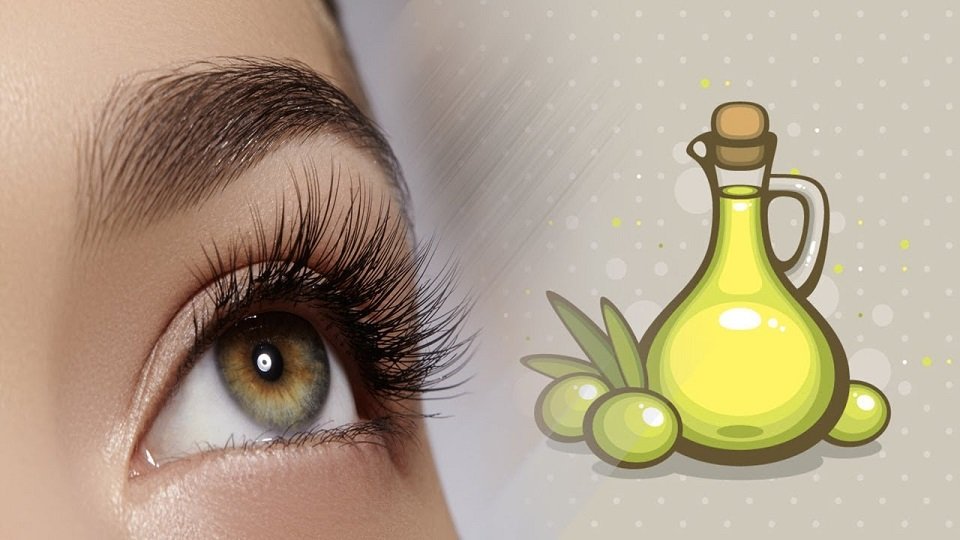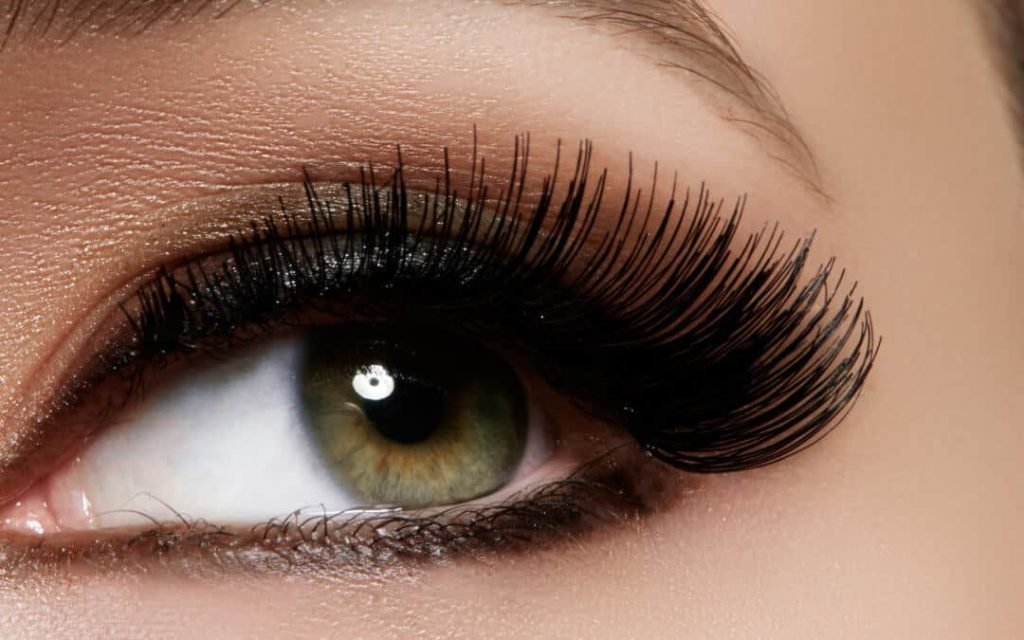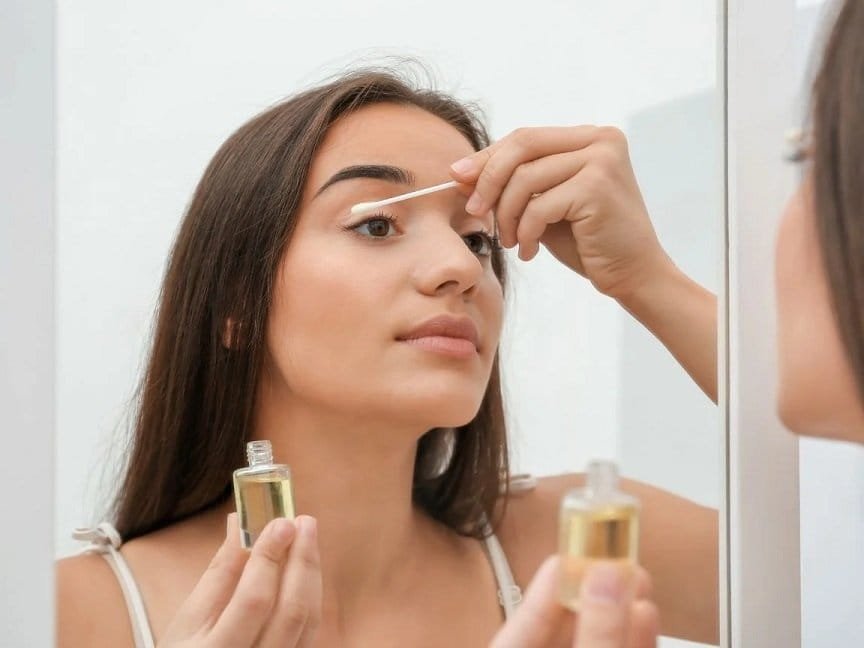Facial and hair routines are increasingly incorporated into the daily life of those who want to have a bright and radiant face throughout the year i
Facial and hair routines are increasingly incorporated into the daily life of those who want to have a bright and radiant face throughout the year in a natural and homemade way. Taking care of your diet, staying hydrated and providing your skin with natural products that provide nutrients and minerals is very important when it comes to starting to see results.
Just as we can eliminate imperfections, hide bags or correct wrinkles that are beginning to appear, importance has begun to be given to eyelash hydration and nutrition.
Argan oil
Argan oil is one of the beneficial oils for eyelashes. It has been used for years for all kinds of natural beauty treatments as it provides us with unsaturated fatty acids and antioxidants that, in addition to nourishing and hydrating our tissues, rebuild and strengthen them. In this way, if we routinely apply it to our eyelashes, we can make them increase in volume and look much thicker and healthier .
Argan oil is a good option for promoting healthy eyelashes. It is rich in antioxidants and vitamin E, which can nourish and protect lashes from damage. Applying a small amount of argan oil to your lashes before bed and leaving it on overnight can help moisturize and strengthen lashes, and promote healthy lash growth.
To apply argan oil to your lashes, use a clean mascara wand or a cotton swab to lightly coat your lashes with a small amount of oil. Be careful not to get any oil in your eyes, as this can cause irritation. You can repeat this process every night before bed for best results.

Almond oil is a good option for promoting healthy eyelashes. It is rich in vitamins E and B, which can promote healthy lash growth and prevent lash breakage.
In this list of the best oils for eyelashes, almond oil could not be missing, since it is a product that has been used for years for hair treatments, demonstrating its hydration and repair capacity. Due to its popular results, its use has expanded and today it has also begun to be used as a moisturizing mascara for eyelashes. Thanks to its contribution of vitamin E and natural fats , it can contribute to strengthening the eyelash from the root, providing not only more density, but also resistance.
To apply almond oil to your lashes, use a clean mascara wand or a cotton swab to lightly coat your lashes with a small amount of oil. Be careful not to get any oil in your eyes, as this can cause irritation. You can repeat this process every night before bed for best results.
Almond oil can also be combined with other oils, such as castor oil or coconut oil, for added benefits. These oils work together to moisturize and nourish lashes, promoting healthy lash growth and preventing lash breakage.
Sesame oil
Sesame oil is becoming more and more common in the use of natural cosmetics since, thanks to its contribution of vitamin E, magnesium, calcium, phosphorus and complex B, it gives hair extra strength that goes from the roots to the ends. Tips effectively. You simply have to apply it every night as if it were conventional mascara and in a few weeks you will notice how your eyelashes have grown.
To apply sesame oil to your lashes, use a clean mascara wand or a cotton swab to lightly coat your lashes with a small amount of oil. Be careful not to get any oil in your eyes, as this can cause irritation. You can repeat this process every night before bed for best results.
Sesame oil can also be combined with other oils, such as castor oil or coconut oil, for added benefits. These oils work together to moisturize and nourish lashes, promoting healthy lash growth and preventing lash breakage. However, some people may be allergic to sesame oil, so it’s important to do a patch test before using it on your lashes. If you experience any redness or irritation, stop using the oil immediately.
Castor oil
If what happens to you is that you notice that your eyelashes are without shine or shape and you wonder “what is good for eyelash growth”, you can use castor oil, or as it is also known, castor oil. This plant-based product is rich in fatty acids, antioxidants, and proteins, which will improve the quality of your eyelashes and make them look much thicker and more wavy .
To apply castor oil to your lashes, use a clean mascara wand or a cotton swab to lightly coat your lashes with a small amount of oil. Be careful not to get any oil in your eyes, as this can cause irritation. You can repeat this process every night before bed for best results.
Castor oil can also be combined with other oils, such as coconut oil or almond oil, for added benefits. These oils work together to moisturize and nourish lashes, promoting healthy lash growth and preventing lash breakage.
It’s important to note that while castor oil can be effective in promoting healthy lash growth, it may not work for everyone. Additionally, if you have sensitive skin, it’s important to do a patch test before using castor oil on your lashes to make sure you don’t have any adverse reactions. If you experience any redness or irritation, stop using the oil immediately.
Olive oil
Another of the best oils for eyelashes is olive oil. This is one of the most versatile vegetable products, since it not only nourishes us from within in the world of gastronomy, but we can also use it as a cosmetic, since it provides us with extra hydration and a natural shine quickly and efficiently. . If you tend to suffer from eyelash loss and want to see them stronger and fuller, one of the best treatments is to use virgin olive oil as a mascara for two weeks and you will notice how they recover their shine and density. .
To apply olive oil to your lashes, use a clean mascara wand or a cotton swab to lightly coat your lashes with a small amount of oil. Be careful not to get any oil in your eyes, as this can cause irritation. You can repeat this process every night before bed for best results.
Olive oil can also be combined with other oils, such as coconut oil or castor oil, for added benefits. These oils work together to moisturize and nourish lashes, promoting healthy lash growth and preventing lash breakage.
However, it’s important to note that while olive oil can be effective in promoting healthy lash growth, it may not work for everyone. Additionally, if you have sensitive skin, it’s important to do a patch test before using olive oil on your lashes to make sure you don’t have any adverse reactions. If you experience any redness or irritation, stop using the oil immediately.
Jojoba oil
This popular jojoba oil for eyelashes is extracted by pressing the seeds of the shrub with the same name. In recent years it has gained great relevance in the world of hair care as it contains ceramide, a key ingredient in helping to strengthen hair and give it vitality. Within the care and maintenance of the eyelashes, jojoba oil can help them become more tense and strong .
Jojoba oil is a good option for promoting healthy eyelashes. It is rich in vitamins and minerals, such as vitamin E, vitamin B complex, and zinc, which can help nourish and strengthen lashes.
To apply jojoba oil to your lashes, use a clean mascara wand or a cotton swab to lightly coat your lashes with a small amount of oil. Be careful not to get any oil in your eyes, as this can cause irritation. You can repeat this process every night before bed for best results.
Jojoba oil can also be combined with other oils, such as castor oil or coconut oil, for added benefits. These oils work together to moisturize and nourish lashes, promoting healthy lash growth and preventing lash breakage.
It’s important to note that while jojoba oil can be effective in promoting healthy lash growth, it may not work for everyone. Additionally, if you have sensitive skin, it’s important to do a patch test before using jojoba oil on your lashes to make sure you don’t have any adverse reactions. If you experience any redness or irritation, stop using the oil immediately.

Hazelnut oil
The next of the eyelash oils is a product made from hazelnuts. Nuts are capable of providing great hydration and nutrients by turning into oil and, like almond oil, hazelnut oil favors hair strengthening , being a great ally for your eyelashes.
wheat oil for eyelashes
To apply hazelnut oil to your lashes, use a clean mascara wand or a cotton swab to lightly coat your lashes with a small amount of oil. Be careful not to get any oil in your eyes, as this can cause irritation. You can repeat this process every night before bed for best results.
Hazelnut oil can also be combined with other oils, such as castor oil or coconut oil, for added benefits. These oils work together to moisturize and nourish lashes, promoting healthy lash growth and preventing lash breakage.
However, it’s important to note that while hazelnut oil can be effective in promoting healthy lash growth, it may not work for everyone. Additionally, if you have sensitive skin, it’s important to do a patch test before using hazelnut oil on your lashes to make sure you don’t have any adverse reactions. If you experience any redness or irritation, stop using the oil immediately.
Wheat oil
One of the vitamins that contributes the most when it comes to promoting hair strengthening is vitamin E and, without a doubt, one of the vegetable oils for eyelashes that contains it the most is wheat oil. In addition, vitamin B can also make the hair of your eyelashes grow and take shape, becoming more elongated and tense . You can find wheat oil in any herbalist and, with the help of an eyelash comb, you should apply it every night until you see how your eyelashes regain vitality.
Wheat oil, also known as wheat germ oil, is a good option for promoting healthy eyelashes. It is rich in vitamins and minerals, such as vitamin E, which can help nourish and strengthen lashes.
To apply wheat oil to your lashes, use a clean mascara wand or a cotton swab to lightly coat your lashes with a small amount of oil. Be careful not to get any oil in your eyes, as this can cause irritation. You can repeat this process every night before bed for best results.
Wheat oil can also be combined with other oils, such as castor oil or coconut oil, for added benefits. These oils work together to moisturize and nourish lashes, promoting healthy lash growth and preventing lash breakage.
However, it’s important to note that while wheat oil can be effective in promoting healthy lash growth, it may not work for everyone. Additionally, if you have sensitive skin, it’s important to do a patch test before using wheat oil on your lashes to make sure you don’t have any adverse reactions. If you experience any redness or irritation, stop using the oil immediately.
causes the fat cells to die and eventually be absorbed by the body. Cryotherapy is a quick and effective treatment for fat balls on the face, but it can be painful and may cause scarring. It is also not recommended for people with darker skin tones, as it can cause hyperpigmentation.
- Laser Treatment for Fat Balls on the Face Laser treatment is a non-invasive and painless option for treating fat balls on the face. It works by using a laser to break down the fat cells under the skin. The body then naturally absorbs the fat cells over time. Laser treatment is usually done in multiple sessions and can be expensive, but it has a high success rate and minimal side effects.
- Surgery for Fat Balls on the Face Surgery is usually only recommended for large and severe cases of fat balls on the face. The surgery involves removing the fat balls from under the skin using a scalpel or other surgical tool. This procedure can be effective but is invasive and carries the risk of scarring and infection.
Natural Remedies for Fat Balls on the Face
- Apple Cider Vinegar for Fat Balls on the Face Apple cider vinegar is a natural remedy that can help reduce the appearance of fat balls on the face. It works by breaking down the fat cells under the skin. To use apple cider vinegar, dilute it with equal parts water and apply it to the affected area with a cotton ball. Leave it on for 15-20 minutes and then rinse it off with warm water. Repeat this process twice a day for several weeks to see results.
- Lemon Juice for Fat Balls on the Face Lemon juice is another natural remedy that can help reduce the appearance of fat balls on the face. It contains citric acid, which can help break down the fat cells under the skin. To use lemon juice, apply it to the affected area with a cotton ball and leave it on for 10-15 minutes. Rinse it off with warm water and repeat this process twice a day for several weeks.
- Castor Oil for Fat Balls on the Face Castor oil is a natural remedy that can help reduce the appearance of fat balls on the face. It contains ricinoleic acid, which can help break down the fat cells under the skin. To use castor oil, apply it to the affected area and massage it into the skin for 5-10 minutes. Leave it on overnight and rinse it off with warm water in the morning. Repeat this process every night for several weeks to see results.
- Aloe Vera for Fat Balls on the Face Aloe vera is a natural remedy that can help reduce the appearance of fat balls on the face. It contains enzymes that can help break down the fat cells under the skin. To use aloe vera, apply the gel directly from the plant to the affected area and leave it on for 15-20 minutes. Rinse it off with warm water and repeat this process twice a day for several weeks.
Prevention of Fat Balls on the Face
- Lifestyle Changes to Prevent Fat Balls on the Face Making lifestyle changes can help prevent the development of fat balls on the face. This includes maintaining a healthy diet and exercise routine, quitting smoking, and reducing alcohol consumption. Managing underlying medical conditions such as diabetes and high cholesterol levels can also help prevent the development of fat balls on the face.
- Dietary Changes to Prevent Fat Balls on the Face Making dietary changes can also help prevent the development of fat balls on the face. This includes reducing the intake of saturated and trans fats and increasing the intake of fruits, vegetables, and whole grains. Consuming foods rich in omega-3 fatty acids such
as fish, nuts, and seeds can also be beneficial for overall health and reducing the risk of developing fat balls on the face.
- Skincare Routine to Prevent Fat Balls on the Face A proper skincare routine can also help prevent the development of fat balls on the face. This includes cleansing the face twice a day, exfoliating once a week, and using a moisturizer suitable for your skin type. Sunscreen should also be used daily to protect the skin from UV damage, which can contribute to the development of fat balls on the face.
Fat balls on the face can be a source of discomfort and self-consciousness for many people. Fortunately, there are a variety of treatment options available, ranging from non-invasive natural remedies to more invasive surgical procedures. Making lifestyle and dietary changes and implementing a proper skincare routine can also help prevent the development of fat balls on the face. If you are considering treatment for fat balls on the face, it is important to consult with a healthcare professional to determine the best option for you.
